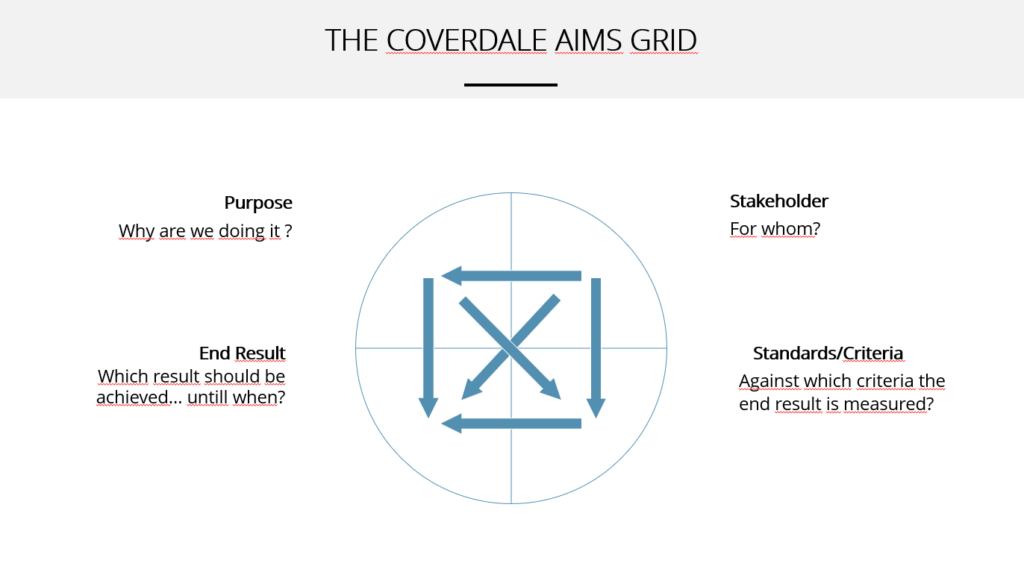Who doesn’t know the question that arises not only in a private context but also in a professional setting when it comes to expressing criticism, communicating dissatisfaction or demanding something?
But especially on the job, a contribution can be made in advance to avoid situations that have led to dissatisfaction due to lack of clarity.
How can the state of ambiguity now be “attacked” in practice?
Especially in fast-moving times, when many things seem unpredictable, it helps to agree on and achieve goals. Does that sound old-fashioned in a world where everything is supposed to be agile and dynamic? Not at all – because goals create clarity!
But how can a goal be defined so that it is clear and, above all, also helps motivate employees because they can locate the meaning in what they are doing? Ralph Coverdale, the founder of Coverdale, dealt intensively with this question and developed four central questions to define an aim:
- “For whom are we doing it?” – The question of stakeholders/clients
- “Why are we doing it?” – The question of meaning/purpose
- “What should be achieved by when?” – The question about the final result
- “Against which criteria the end result will be measured?” – The question of success criteria

The Coverdale Aims Grid, makes it possible to capture all relevant aspects of an aim compactly and visualise their interdependencies.
Stakeholder
Clarity about the target group/clients is essential to capture those for whom the end result matters. Likewise, this segment also makes the clients visible.
Purpose
The purpose needs to be defined by the stakeholder. A lack of clarity about the purpose often goes hand in hand with failure, financial losses, etc. A clear purpose can serve as a source of motivation for the individual and will create less resistance when implementing (unpopular) goals. But – different stakeholders can pursue other purposes with one goal.
Therefore, it is all the more critical, especially in the case of more extensive activities and projects, to negotiate a common understanding between the stakeholders, which purposes will be pursued and which not.
End Result
The final result indicates which result needs to be achieved by when. All arrows converge in this square. As explained above, the stakeholders influence the desired end result, and the defined purpose also plays a role. The criteria are also inextricably linked to the end result.
Criteria
The criteria make it possible to check the end result. By defining the standards, consider the areas of quality, resources, time, design requirements, etc.
Define the criteria together with the stakeholders while clarifying the assignment and use them as a “quality check” after achieving the goal.
As seen in the Coverdale Aims Grid, all four segments are interrelated. A change in the content of one quadrant can mean immediate effects on the other three segments.
In case of changes, conduct a cross-check to ensure that the contents of the respective segment fit the others.
Clarity as the key to success
Please work with the Coverdale Aims grid to define assignments or delegate them to avoid later dissatisfaction and frustration.
By filling in the four sections of the aims grid together, the interrelationships of stakeholders, purpose, end result and criteria become comprehensible and objectively assessable.
This tool in no way replaces continuous communication between the client and the persons carrying out the work – instead, it offers the chance to have a good companion in the form of the aims grid at hand from the beginning to the acceptance to be able to answer the question “How do I say what I want?


Recent Comments